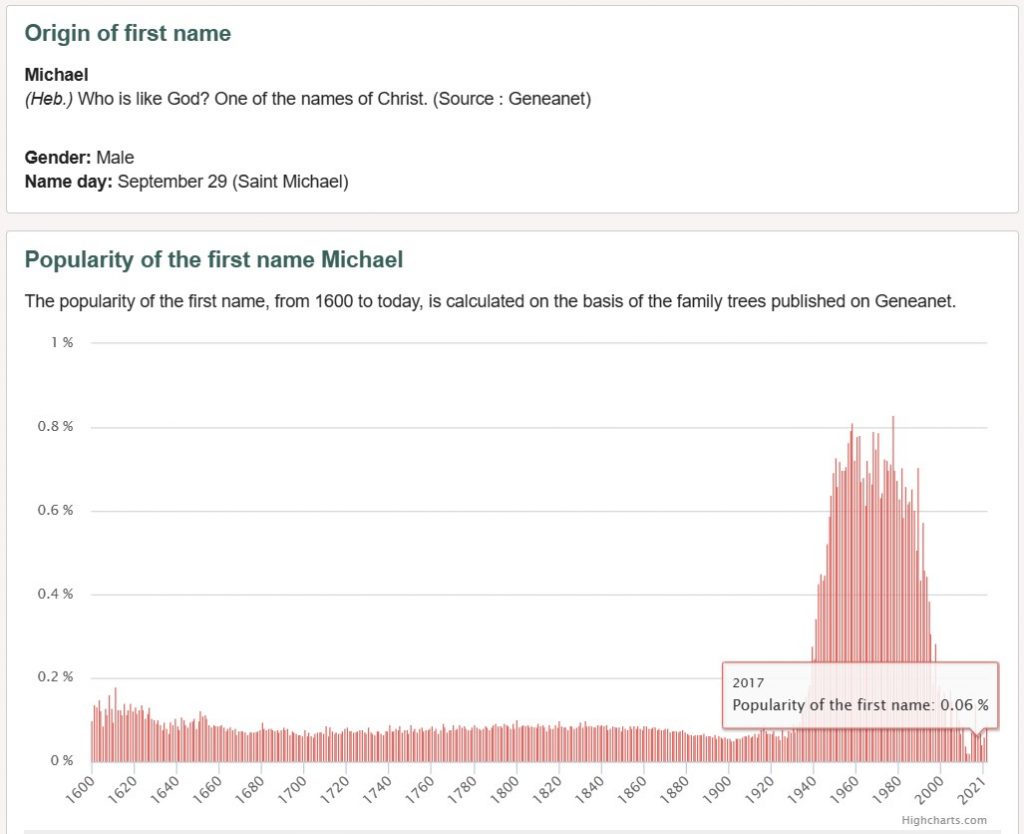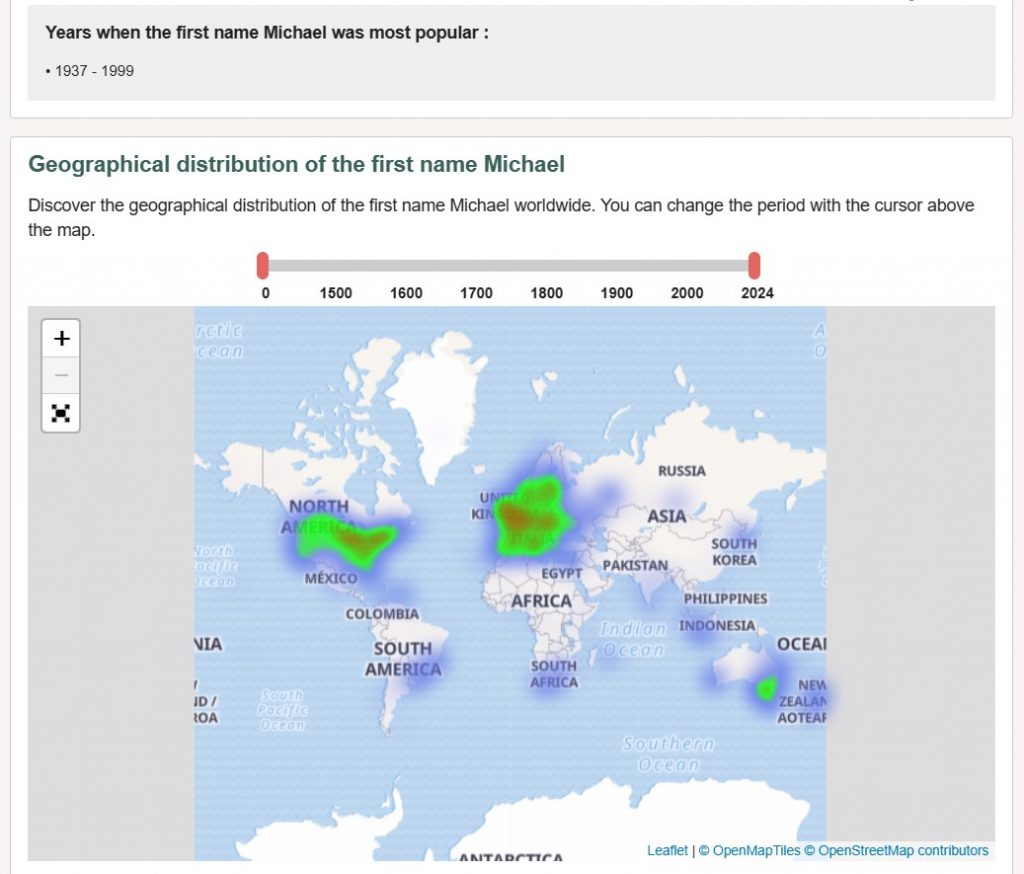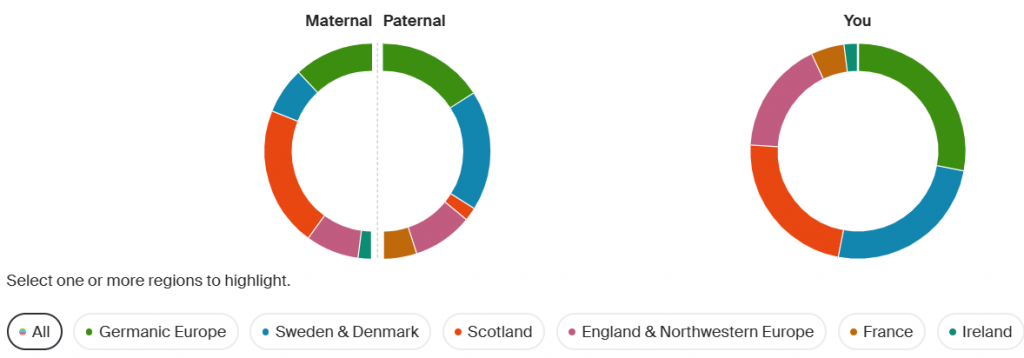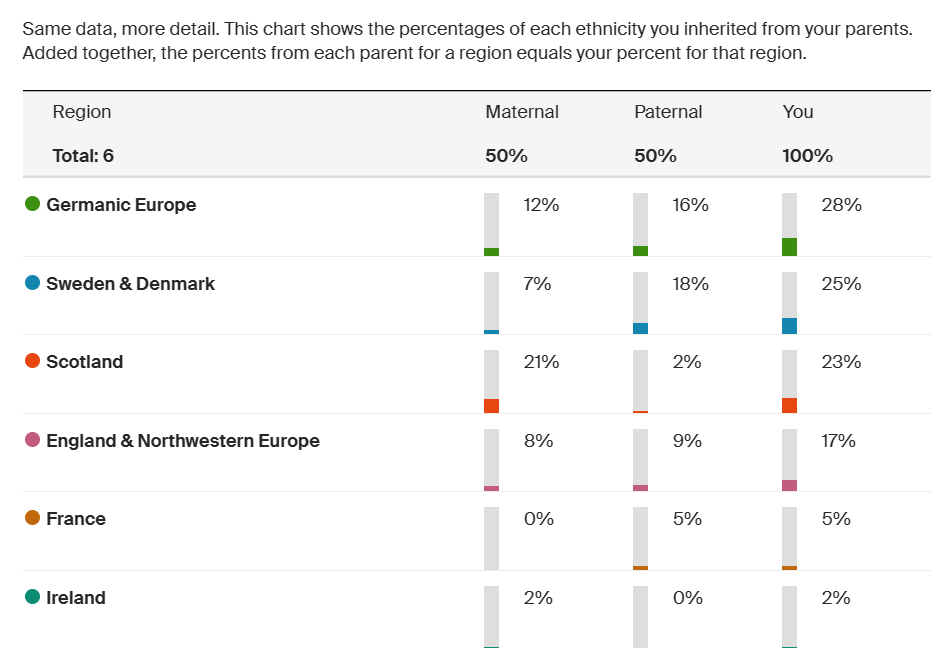Do you know what your first name says about you? Where it came from? What it means?
Geneanet (https://geneanet.com) has a new feature that allows you to look up any name and get a complete rundown on all the questions you may have about your name.
You didn’t have a choice (in most cases) what you were called when you were born, so the site may give you some insight into what your parents were thinking when they named you.
My father was Protestant and my mother was Catholic, so they compromised and I was baptized Episcopalian.








